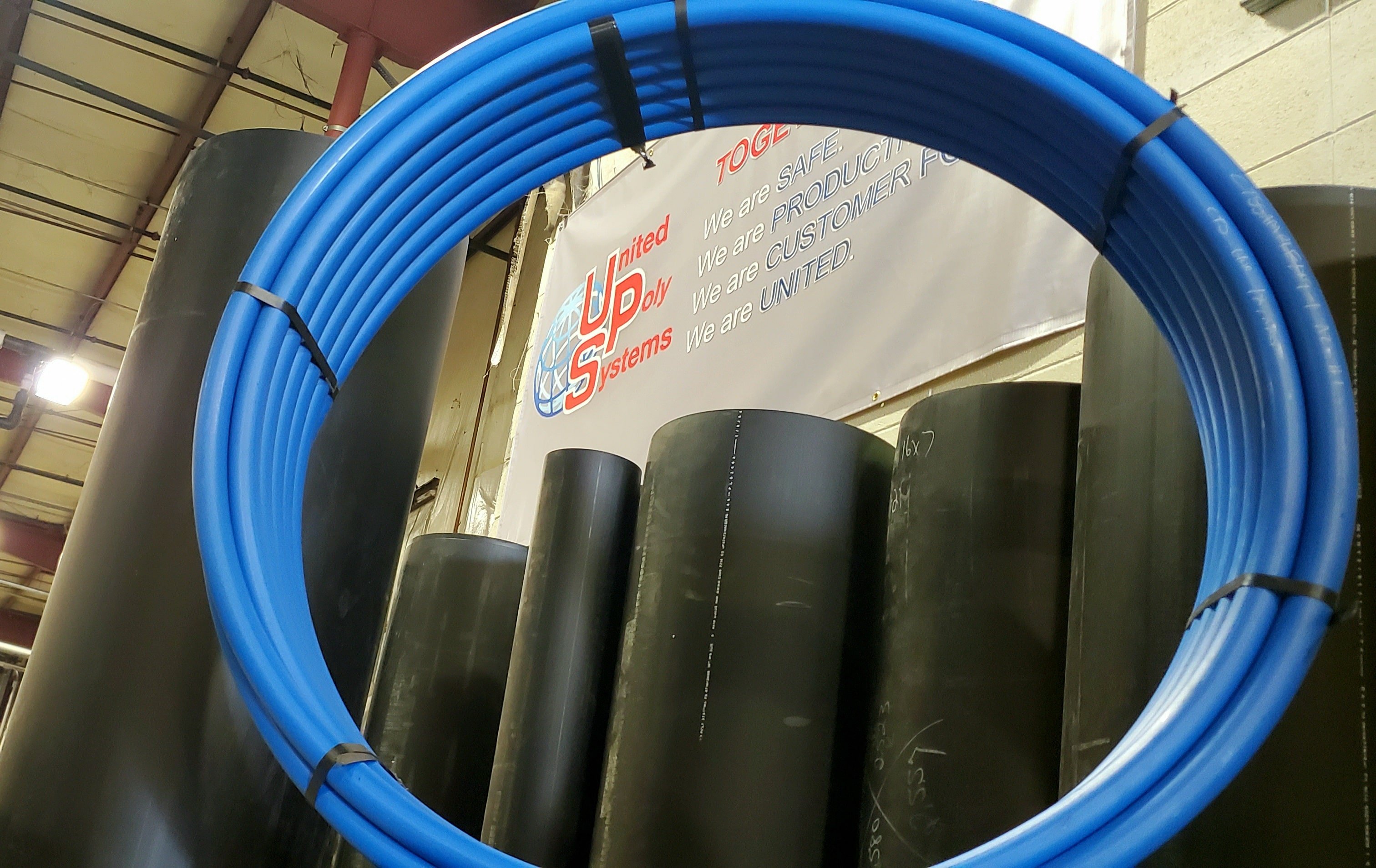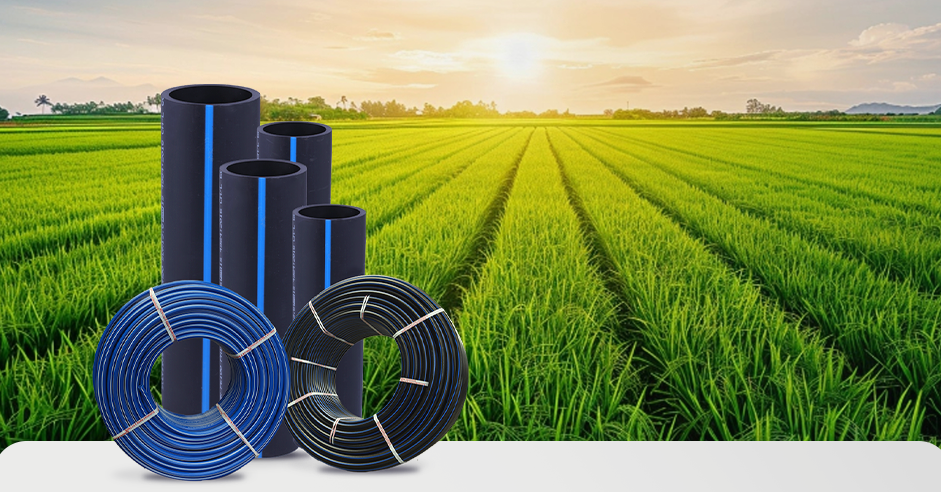American Plastics HDPE Pipe for Oilfield: Strength in Harsh Environments
The Crucial Steps for Successful Installment of HDPE Pipe in Your Following Task
Effective setup of HDPE pipe calls for cautious planning and execution. Trick actions include assessing project needs, preparing the website, and choosing proper signing up with methods. Each phase plays a crucial role in making certain the honesty and performance of the pipe. Recognizing these necessary steps can greatly affect the general success of the project - hdpe pipe in stock Midland TX. However, the subtleties of each step may hold the key to getting over typical challenges encountered during installment
Understanding the Perks of HDPE Pipe
High-density polyethylene (HDPE) pipe offers many benefits that make it a preferred option for various applications. Its high resistance to deterioration and chemicals assurances durability in requiring settings, significantly expanding the lifespan of setups. In addition, HDPE's flexibility enables for less complicated installation, especially in challenging surfaces, as it can flex without breaking. The lightweight nature of HDPE pipeline streamlines transport and handling, decreasing labor expenses throughout installment.
Moreover, HDPE pipe is known for its reduced friction coefficient, which improves fluid flow and lessens power usage. Its seamless construction decreases the danger of leaks, adding to better resource management and environmental protection. Additionally, HDPE is recyclable, aligning with lasting techniques and lowering ecological effect. Generally, the combination of stamina, versatility, and eco-friendliness makes HDPE pipe an exceptional choice for a large range of tasks, from water circulation to commercial applications.
Preparation Your HDPE Pipeline Setup
When preparing an installment of HDPE pipeline, cautious consideration of a number of essential aspects is crucial to safeguard an effective task. Job supervisors must evaluate the details demands of the pipeline, consisting of the planned use, flow rates, and environmental problems. Comprehending these criteria will certainly guide the selection of appropriate pipeline measurements and material quality.
Next, timelines should be developed, factoring in purchase timetables and any kind of possible delays. Control with regional authorities for authorizations and regulatory compliance is additionally crucial. Additionally, a thorough budget must be prepared, incorporating all costs connected with products, labor, and machinery.
It is important to engage a qualified group experienced in HDPE pipeline installment. Their know-how will certainly help reduce dangers, assurance adherence to sector standards, and ultimately add to the job's success. Complete preparation prepares for a smooth installation process and lasting efficiency of the HDPE piping system.
Preparing the Website for Installment
Proper site preparation is vital for the effective setup of HDPE pipeline. Prior to setup starts, the website must be completely analyzed to assure it fulfills all essential requirements. This includes checking the ground for existing structures, energies, and prospective risks that could hinder the installation process.

Appropriate elevation and alignment should be developed to keep a regular gradient for drainage purposes. Correct water drainage around the setup site is also vital to avoid water accumulation, which can lead to complications down the line.
Strategies for Signing Up With HDPE Pipelines
Achieving a dependable link in between HDPE pipes is essential for making certain the stability and long life of the setup. Various strategies exist for joining these pipelines, each fit for different task requirements. Blend welding is among the most typical methods, making use of heat to bond the pipeline ends with each other, creating a smooth and durable link. This technique can be additional categorized into outlet combination and butt blend, depending upon the pipe setups.
Mechanical installations are one more alternative, employing clamps and threaded ports to sign up with sections of HDPE pipeline. While generally faster to set up, they might require added maintenance gradually. Electrofusion is a customized method that entails using electric existing to heat and fuse the pipes with particularly developed installations, ensuring a strong bond. Picking the appropriate joining strategy is crucial, as it directly influences the overall performance and integrity of the HDPE piping system in the intended application.
Testing and Examination of Installed Pipes
The testing and evaluation of mounted HDPE pipes are crucial to ensuring their performance and durability. This procedure includes aesthetic assessment strategies, stress screening techniques, and leakage discovery treatments to determine prospective problems. By utilizing these techniques, experts can confirm the integrity of the installation before it is placed right into usage.
Aesthetic Evaluation Techniques
Utilizing effective visual inspection strategies is essential for assuring the stability of set up HDPE pipes. Inspectors need to methodically take a look at all visible sections of the pipe to determine any type of indications of damage, misalignment, or inappropriate installment. Secret indicators to assess consist of joint stability, surface abnormalities, and links. Inspectors might use devices such as amplifying glasses or cams to enhance presence and detail. It is important to look for indicators of environmental stress, such as bending or extreme flexing, which might compromise efficiency. Consistent documents of findings permits tracking modifications over time and assists guide essential repair services. By adhering to established aesthetic inspection procedures, project groups can especially reduce the threat of future failures and guarantee long-lasting reliability of the piping system.
Pressure Evaluating Techniques
Aesthetic inspection offers as a preliminary measure, yet it is not sufficient on its very own to assure the performance of set up HDPE pipelines. Stress screening methods are crucial for making sure the honesty of these systems. Generally, hydrostatic screening is used, where the pipes are full of water and subjected to stress levels above the designated operating stress. This method assists determine weak points or possible leakages. Pneumatically-driven screening can also be utilized, although it brings higher threats as a result of the compressibility of air. No matter the method chosen, adhering to industry requirements and security procedures is crucial. After performing pressure examinations, detailed documents is required to verify the outcomes and verify that the installment meets all operational demands before continuing to the next phase of the job.

Drip Discovery Procedures
Exactly how can one assure that mounted HDPE pipes are without leaks? Effective leak discovery treatments are essential to safeguard the honesty of the system. Aesthetic examinations need to be executed, looking for indicators of water buildup or dirt disintegration around pipe joints. Following this, pressure testing can confirm the system's stamina. A common method is the hydrostatic examination, where water is presented under pressure, monitoring for decreases that show prospective leakages. In addition, progressed modern technologies, such as acoustic sensors or infrared thermography, can spot leakages that might not show up. Routine surveillance and maintenance additional add to the longevity of HDPE pipelines, guaranteeing they remain leak-free throughout their operational life-span. Proper paperwork of these treatments is essential for compliance and future recommendation.
Upkeep Tips for Long-Term Performance
To ensure the long life of HDPE pipes, establishing a normal evaluation timetable is vital. This aggressive method enables the early discovery of potential concerns, reducing pricey repair work. In addition, carrying out proper cleaning techniques will certainly aid preserve peak efficiency and protect against accumulation that can influence functionality.
Normal Evaluation Arrange
Although HDPE pipelines are recognized for their sturdiness and resistance to corrosion, developing a normal evaluation timetable is important for ensuring their long-lasting efficiency. Regular evaluations help determine prospective problems such as leaks, joint honesty, here and ecological impacts that may impact the pipeline's performance. It is advised that assessments take place at least biannually, or much more frequently in settings with extreme problems. American Plastics HDPE Pipe Manufacturing. Throughout these analyses, visual checks should be performed to identify indications of wear or damages. In addition, making use of innovation such as ultrasonic testing can supply further understandings right into the pipe's problem. By executing an organized evaluation routine, task managers can proactively attend to troubles, thus expanding the lifespan of HDPE pipes and preserving system performance
Proper Cleaning Techniques
Appropriate cleansing techniques play a necessary role in maintaining the long-lasting efficiency of HDPE pipelines. Normal cleaning avoids the accumulation of particles, debris, and biofilm, which can lead to blockages and decreased flow effectiveness. Operators needs to use methods such as high-pressure water jetting or foam cleaning to efficiently eliminate pollutants without harming the pipeline surface area. It is essential to avoid using harsh chemicals that may degrade HDPE material. Additionally, scheduled maintenance checks should include visual evaluations for any signs of wear or damage. Properly trained employees need to perform these cleansing procedures, making sure conformity with security and environmental policies. By executing these practices, the lifespan of HDPE pipelines can be substantially prolonged, making sure suitable performance throughout their functional life.
Regularly Asked Concerns
What Are the Environmental Impacts of HDPE Pipeline Production?
The environmental influences of HDPE pipeline production consist of greenhouse gas discharges, energy consumption throughout manufacturing, potential plastic air pollution, and difficulties in recycling. HDPE's durability and resistance to deterioration can reduce some ecological worries.
Exactly How Does HDPE Pipeline Contrast to Various Other Materials?

What Equipment Are Needed for HDPE Pipeline Installment?
Important tools for HDPE pipe setup consist of a blend equipment, pipeline cutters, shovels, gauging tape, and safety gear. Proper equipment assurances effective, risk-free handling and setup, adding to the job's general success and honesty.
Exist Any Type Of Certain Laws for HDPE Pipeline Setup?
Certain guidelines for HDPE pipe setup vary by region, frequently governed by local, state, or government codes. Conformity with these guidelines assurances security, environmental management, and functionality, making adherence essential for effective task results.
Can HDPE Pipeline Be Recycled After Use?
Yes, HDPE pipelines can be reused after use. Their thermoplastic nature enables reprocessing, making them ideal for recycling into brand-new products. This sustainability aspect adds to ecological conservation and advertises round economic climate practices in building and construction.